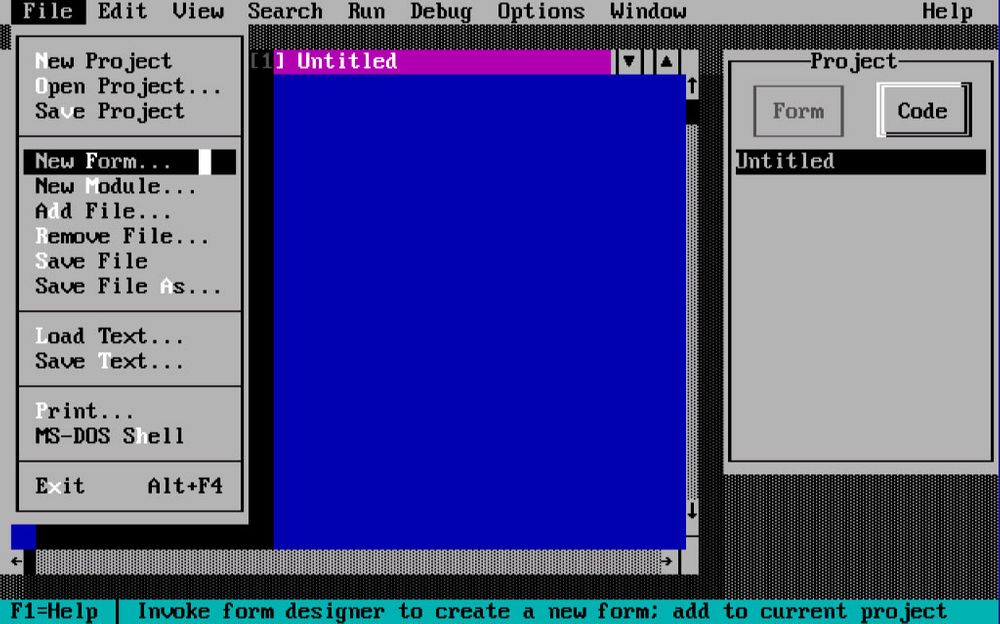25 years of Visual Basic 6
Visual Basic 6.0 was the last version of Visual Basic “classic” (before VB.NET). It was by far the most popular version for 32-bit Windows 95/NT and later. It was extremely popular, and is still used in many companies. It was released in mid 1998 and improved in a number of areas over version 5.0, for example:
- Faster compiler
- New ActiveX data control object
- New data report designer
- New Package & Deployment Wizard
- Additional internet capabilities
Let us remember how Visual Basic became such as great development environment.
Brief history
Alan Cooper is widely recognized as the “Father of Visual Basic”. He and his company (called Tripod) was contracted by Microsoft to develop a programmable form system for Windows 3.0, under the code name Ruby (no relation to the later Ruby programming language). It did not include a programming language at all. Microsoft decided to combine Ruby with the Basic language to create Visual Basic. Ruby also provided the ability to load dynamic link libraries containing additional controls (then called “gizmos”), which later became the VBX interface (predates ActiveX). The invention of the “VBX” interface created an entire new marketplace for vendors of these “dynamically installable controls” (hello OCX!).
First version
The project ‘basic Thunder’ was launched in 1990: a combination of Ruby form system and embedding the language BASIC. Thunder remained in the name of the primary internal function, ThunderRTMain, until the last version of the build. Visual Basic 1.0 was released for Windows 3.x (16-bit) in May 1991 at the Comdex/Windows World trade show in Atlanta, Georgia.

VB DOS
Microsoft released Visual Basic 1.0 for MS-DOS in 1992, at a time when many users and companies were still using DOS. It is the successor to QuickBASIC and BASIC Professional Development System. It was the only version of VB for DOS, as Microsoft focused on Windows development.

Visual Basic 2.0 and 3.0
Visual Basic 2.0 was released in November 1992. The programming environment was easier to use, and its speed was improved. However, the most noticeable version was Visual Basic 3.0 which was released in the summer of 1993 and was available in Standard and Professional versions. VB3 included version 1.1 of the Jet Database Engine, which could read and write Jet (or Access) 1.x databases. So, it became popular for developing applications with database access under Windows 3.x.

Visual Basic 4.0
Visual Basic 4.0 was released in August 1995 and was the first version that could create both 32-bit and 16-bit Windows programs. While earlier versions of Visual Basic had used VBX controls, Visual Basic now used OLE controls (with filenames ending in .OCX) instead. These would later to be called ActiveX controls. It was the last version that supported 16-bit programs.

Visual Basic 5.0
Visual Basic 5.0 (February 1997) was exclusively for 32-bit versions of Windows. It introduced the ability to create custom user controls and the ability to compile to native Windows executable code which accelerated the execution of computationally intensive code.

Visual Basic 6
Visual Basic 6.0 (mid 1998) improved features introduced in previous version and added new features such as: ADO (new OLEDB-aware data source), IIS applications, DHTML applications, Data Reports, … It was by far the most popular version. The Visual Basic 6 Core runtime environment is officially supported by Microsoft for the lifetime of Windows 10 and Windows 11. However, the Visual Basic development environment (IDE) is no longer supported. Today, there are many applications build with VB6 that are used by many users.
VB.NET
Visual Basic .NET is Microsoft’s designated successor to Visual Basic 6.0. It is part of the .NET platform and abandons the native executables introduced in the 5.0/6.0 era. The main problem is that is not backward compatible with Visual Basic 6.0. So, you have to learn a new language/framework and rewrite your VB6 code to VB.NET.
RAD Basic: Visual Basic classic new beginning
Since the costs of rewritting entire software applications build with VB6 is prohibited, RAD Basic presents a solution that is 100% compatible with VB6. It works natively with VB6 file formats and follows the VB6 language definition. The main goal is compatibility and faciliting the adoption path of this new and real replacement.

Visual Basic 6 (AKA Visual Basic Classic) is on TOP-20 of the TIOBE index, the applications created with it are used by many people and many developers are coding actively with it. And RAD Basic will extend and support this great development environment.
Happy VB6 25th birthday!
